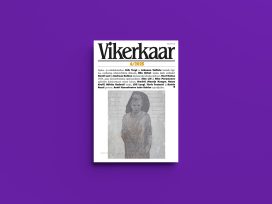Bartók Remembered – this is the title given to an important collection of testimonies by the composer’s contemporaries, extending from family members and the inner circle of friends to pupils and occasional acquaintances. The German translation of the book tries to make the point even more obvious in the combined form of title-cum-subtitle, Béla Bartók im Spiegel seiner Zeit: Portraitiert von Zeitgenossen. Both are, of course, series titles rather than the author’s own choice. A Hungarian “forerunner” to the English-language volume, Így láttuk Bartókot, “this is how we saw Bartók,” although relegating the actual present of remembering to the subtitle (“recollections”), also emphasizes the unavoidably subjective nature of recollection. Remembering is not only subjective but also occasional and is often defined and influenced by circumstances. Despite this, the main interest lies in the past conjured up by memory.
Publishing an edited version of his conversations with the pianist Elisabeth Klein, the British composer John Moseley provides us with a surprising new testimony. It is surprising both because of its source, Bartók’s previously unregistered private piano pupil, and because of its content, a few snapshots or perhaps rather sketches from a period of the composer’s life rarely observed from such closeness with such a critical eye. Elisabeth Klein, who appears as “Klein Erzsébet” in yearbooks of the Music Academy in Budapest between 1930 and 1934, obviously studied with Bartók privately from 1934 when such pianists also attended private piano classes held in the composer’s home as the Hungarian György Sándor (1912-2005), or the American Storm Bull (1913-2007).
Although the publication is intended as a tribute to the pianist Klein, and the conversation did include a number of details of her life and career, the true central subject for both interviewee and interviewer was Bartók, and it will undoubtedly be so for the general reader as well. This is why it seemed appropriate to add a number of notes to this interesting personal recollection regarding particular details of Bartók’s life. While the interview is a genuine document, it does contain a number of confusions and inaccuracies which need correction. Some of my comments of course only serve to strengthen the information value of something mentioned by Klein. The notes are thus intended to make this testimony by a nonagenarian of remarkable vividness of mind a fully reliable source on Bartók’s life and personality.
László Vikárius
The life of Elisabeth Klein (1911-2004) stretched from the Austro-Hungarian Empire of the Habsburgs through the inter-war years of the Horthy regime, isolation, then marriage, in Denmark during the Second World War, where due to her husband’s political affiliation with Great Britain she was hunted by the Nazis onto a successful career as pianist and teacher mainly in Scandinavia. She specialised in the 20th-century repertoire being particularly noted for her performances of Bartók, the Second Viennese School, contemporary Scandinavian composers, of which she gave many premieres, Boulez, Stockhausen and Berio. Much of this repertoire was recorded. She performed widely in Europe, the USA, the Middle East and China. Towards the end of her life she settled in England with her son, the George Holt Professor of Physiology in the University of Liverpool, and his family. This was when I met her. The following article is an amalgam of several conversations which took place during the last 18 months of her life. She gave her final recital at the Metropolitan Cathedral, Liverpool a few months before her death. She chose late Liszt and Bartók and ended with ‘The Night’s Music’ from the suite Out of Doors. I was present and like others in the audience, was astonished by the accuracy, vigour and detail of her playing.
Like many musicians from Mitteleuropa, dislocated by improbable circumstance, Elisabeth Klein’s career developed despite of – and partly because of – the ever-changing political situation. The rigorous training she received at the Liszt Academy and with Bartók laid the foundation for a long career in which her aim was to play objectively, with a minimum of subjective interpretation. Short and slight, a gracious hostess, fluent in several languages, determined, even wilful, she, nevertheless, retained the charm and manner of her upbringing. She was a vivid and candid talker who knew exactly what she wanted to say. There were no hesitations or fanciful imaginings. Her conversation, like her playing, was objective. Such objectivity offered, perhaps, security in a changing world, for I sensed, below the calm and dignified surface, a woman of strong emotions. In this, she reflected her teacher, Bartók.
John Moseley
John Moseley: You have had a long and extraordinary life. Would you please tell us something about your early years?
Elisabeth Klein: Because of my association with Bartók many people think of me as a specifically Hungarian musician. However, I was born in 1911 in Trencín (Trencsény), which is now in Slovakia and was then part of Greater Hungary, which belonged to the Habsburg Dual Monarchy. In fact my father, whose mother was a baroness, was Austrian, having been born in Bratislava (Pressburg/ Pozsony), although the family originated from the Graz area. When I was three, we moved to Budapest and lived in the Fasor, known as the street with many churches. My father was not religious, but both my sister and I went to a Roman Catholic school, this being the state religion. Later, my father allowed us to choose which church we went to and we chose the Unitarian. My home life was happy and prosperous, but I do recall that in the Budapest of the ’20s and ’30s ordinary workers dropped in the street through hunger. It was an uppermiddle-class household with servants, of course, and a governess for my sister and myself. We were always chaperoned to and from school. I attended the Maria Theresia Gymnasium, which was about five minutes walk from the Oktogon. We wore a uniform that included a hat on which silver symbols denoted our year: 1, 2, 3 etc. up to 8. It was a strict and thorough education, including eight hours of Latin per week. Each day began with the pupils standing to sing the National Anthem. Folk songs were not taught. My young years coincided with the demise of the Dual Monarchy. I certainly felt more Austrian than Hungarian and recall seeing the Emperor Karl drive past in his carriage. He wore military uniform.
People criticised the Habsburgs, especially the Empress Zita, but were sorry when they were deposed. Bartók, who was said to be a Communist, did not approve of them. Like me, he would probably have known that, in the 1930s, Friday was designated “Beggars’ Day”. Perhaps 60 per cent of people were barely literate.
JM: Please tell us about your early musical experiences.
EK: I recall going to services at the Matthias Church in Buda. There was a first-class choir which performed the Haydn and Mozart masses. My sister, who was eight years older than me, was already playing Beethoven sonatas by the time I started piano lessons aged five. I found that I could play some of these movements by ear and seemed to have been born with a great technical facility. I enrolled at the Conservatoire where my studies ran parallel with those at school. The Conservatoire course consisted of four years in the Beginner’s section, although I could already read music when I entered; four years in the Intermediate, then four years in the Higher. After each section there was an examination. As with school, we received a very thorough grounding. We really concentrated on our work: there was little time for anything else. Even in my final years there I was still chaperoned. One girl was dismissed for being seen arm-in-arm with a boy. Then a choice had to be made between the pedagogic and the artistic routes. My father wanted me to take the former, which I did, because this would lead to the security of the teaching profession, but I took the artistic course as well. At the end of 1934 I graduated and gave a recital in the Academy. My programme was Bach’s Toccata and Fugue in C major, Beethoven’s Appassionata Sonata, Liszt’s Mephisto Waltz, and Dante Sonata and Debussy’s Feu d’artifice.
JM: Were you not taught by Bartók at this time?
EK: No. Bartók came to this graduate recital – he was then in his last year at the Academy – and said that although my playing was too romantic, he would teach me privately in his home. He did this in weekly lessons with two other pianists, György Sándor and Pál Fejér. Both were Jewish. Sándor escaped to the USA and made a big career but Fejér, who was the most talented of us, disappeared during the war. The very best pupils, such as Annie Fischer, went not to Bartók but to Dohnányi, the Director of the Academy.
JM: What form did these lessons take?
EK: We went to his home at the appointed time. In his study were two pianos: he sat at one and we at the other, taking it in turn to play for him. At the first mistake we had to stop and the next person continued. Everything had to be by heart and we had to work very hard before each lesson. Bartók felt that I had a good technique, but that I was not musically ready for a career. I thought that I had given my all and was very disappointed. In retrospect I think he was right. I never questioned his methods even though he made very few comments and never about technical problems. He expected a fine technique already. I once asked about a particular fingering and he replied “Use your nose if you like.” Teaching brought in an income – he was paid monthly in cash left in an envelope – but I don’t think he enjoyed it. His fees were modest but they assured a reasonable standard of living then. Sheet music, scores, books were all cheap. Food, wine and clothes also. Workers had very low wages. So Bartók was not badly off but never as prosperous as he wished. His final house in Buda, now the Bartók Museum, was rented. Even his pianos were rented.
JM: What sort of repertoire did you study?
EK: Scarlatti, Couperin, Bach. He possessed a profound understanding of the Forty-eight Preludes and Fuges. The Preludes he thought lacked substance, but he could make a speech about each of the fugues. In this way he made me look at Bach with new eyes: he expected strict tempos and no pedal. He considered my Bach playing to be undisciplined, by which he meant over-romanticised.
JM: This is interesting because his editions of Baroque composers are heavily romanticised, with octave doublings and very many indications of tempo, dynamics, accents, staccatos and so on. In this they resemble Kabalevsky’s editions of Bach.
EK: He did the Bach “48” edition for money. The markings are very romantic and he wanted us to observe them, so there is a contradiction here. His own playing of them brought out all the parts clearly, but he never performed them in concerts. It is obvious that he took a lot of trouble with his editing. Just as in his own work, there are many detailed markings. He added tempi, pauses and even doublings as in the final twelve bars of the E-flat Fugue from Book II. The effect is rather like Liszt, whose music had a direct effect on his early style. Even his interpretations of his own music do not always follow his intentions as set out in his scores.
JM: Yes, the recorded sound may be primitive, but he clearly uses more rubato than is indicated and performances of the same piece differ.
EK: This may reflect his background as a student and his early interest in the music of Liszt, Debussy and Richard Strauss. He was trained as a virtuoso at a time when rubato was the norm, but he moved away from such romanticism to something much stricter and ascetic.
JM: Was he frustrated by the imprecisions of conventional notation?
EK: His experience of notating folk music made him acutely aware of such constraints, which led to experimentation, as in the use of harmonics in Mikrokosmos.
JM: In regard to folk music Grieg had, rather unexpectedly, an influence on him.
EK: He met Grieg in the early 1900s. He played. Grieg was good to him and showed him some of the pieces he was working on that were based on Norwegian folk tunes. Bartók took to the idea and mentioned it to Kodály, who showed him how to transcribe. From then on it was a consuming interest, though not confined to Europe. There is an Angolian influence in the third movement of the Suite op. 14 – it has to be played very lightly. The first movement is about soldiers.
JM: Did Bartók teach you any of his own music?
EK: I think that was why he took us on as pupils. He wanted pianists of good technique who could be moulded to play his music in the way he wanted. We would therefore be a new generation to carry his music forward, especially if we performed abroad. Nevertheless, he said nothing about his own music in the first lesson, but I asked if I could learn the Suite op. 14 and he agreed. I was frequently stopped, several times in each bar. His concerns were not so much about touch, but about tempo, which had to be very strict, and about overall structure. He took no fee for these lessons, and it may seem bad of me to say so, but I don’t think he was a good teacher. He had little imagination to consider the individual. He wouldn’t discuss his music, but told us what to do. He rarely played himself, but sometimes he did demonstrate, particularly the Bach fugues.
JM: Was he a very good pianist?
EK: I thought he played the early Beethoven sonatas better than anyone, particularly the outer movements. They were very rhythmic, with hardly any pedal. His Chopin I thought was not so good, being too inflexible. He performed some of the Seven Piano Pieces of Kodály and certain of his own compositions, mainly the more approachable ones, such as Evening in the Village. He had a clear, rather hard touch. Although he was small, his hands were very large – he had a stretch of eleven notes – and powerful. Dohnányi was a more poetic player and far better known.
JM: Nevertheless, Bartók was an eminent figure. Were you in awe of him?
EK: Of course. He was rather frightening: arrogant, very moody and unpredictable. I think he was unhappy. He didn’t get on with Dohnányi, the Director of the Conservatoire, and he worried about the political situation. Kodály was more approachable and flexible. Hubay also was very friendly.
JM: Bartók was a man of principle?
EK: Certainly. He was in prison just after the First World War for a fortnight, because of his left-wing sympathies. Nearly twenty years later, when he was sent official documents asking if he was Jewish or of Jewish extraction, he put on them “We are all Jews.” For his twenty-fifth anniversary as a composer, the state wanted to give him a medal and quite a large sum of money. This was considered a big honour, but he would not accept them and even wrote to the newspapers telling them that he would not accept anything from that particular government. He was against Hitler, and it became increasingly clear that he would have to leave Hungary, although he was always expected to return. With him black was always black and white always white. Once he’d made a decision, nothing would deflect him. Yes, he was difficult and, unlike Kodály, politically naive. Did he, I wonder, consider sufficiently the consequences of his words and actions or lack of them?
JM: This is curious because I think you said that he failed to help László Halmos, the second violinist in the Hungarian Quartet yet he clearly had sympathy for his Jewish colleagues?
EK: In 1938 the Jews had their passports taken away. Halmos, being Jewish, had to leave the Quartet and wasn’t allowed out of Hungary because he had no passport. It was an awful situation not only for Halmos but for the Quartet, because they couldn’t leave Hungary. He, (Halmos), was replaced by Székely and Sándor Végh left the Quartet because of this. We felt that Bartók could have done more to help Halmos, who died in the war.
JM: How did you come to know the Quartet?
EK: Bartók invited me to listen to them rehearsing his Fifth Quartet, which they did for many days from 8:00 in the morning to 2:00 p.m. The first performance had been in the USA with the Kolisch Quartet but Bartók wasn’t very happy with it. He asked the Hungarians to learn it for the ISCM Festival in Barcelona in 1936. They were men in their twenties, and as with me he felt he could mould them into giving the performance exactly as he wanted it to be.
JM: Was Bartók’s manner different during those rehearsals than it had been during your lessons with him?
EK: I sat in a corner (as small as could be), and suddenly he was a normal man who could make us all laugh. Although he knew exactly what he wanted, he was more at ease. The same was true when I played the Violin Sonata with Halmos before he left the Quartet. Bartók was such a strong character one didn’t question his opinion, but we did see the other side of him. I don’t think he was always right and it took me twenty years to shake off his influence.
JM: Photographs show him to be a very conventional man.
EK: Yes, externally. He was a small man, always very smartly and formally dressed, in a waistcoat even in hot weather. However, in his personal life he was somewhat unusual. When he lived on the Hill of Roses in Buda, a neighbour asked him to give his two boys piano lessons. Bartók was not keen so he passed them over to me. They were in their mid- to late teens and not really interested, so disciplining them was difficult, especially since I was not much older than they. On one occasion the elder boy kept looking out of the window and motioning me to join him. There was Bartók and his family completely naked, a not infrequent circumstance that caused bad relations with his neighbours. The police were summoned, but Bartók talked his way out of it and continued as before. He had a need for the untouched in everything. He loved the pure songs from the villages which were not destroyed by city or Gypsy music. Such music was natural and pure, like nudity and the affection of young girls. He was very interested in young girls; his first wife was only sixteen when they married. An affair with a fifteen-year-old girl is now known about. She wrote the words to four of the Five Songs for Voice and Piano. Aware of the potential scandal, Bartók claimed that he had written the texts himself. Rumours spread. This resulted in the break-up of the marriage. Bartók sent his wife back to her home territory of Transylvania with his son Béla. She stayed two weeks and was told not to return. It was very cruel. He divorced her. This pattern of relationships continued with his second wife, Ditta (Pásztory) who was in her early twenties and he in his fifties when they married. I recall her telling me of the circumstances of their marriage. Like myself, she was a piano pupil of Bartók’s. Her lesson was the last of the day and one evening Bartók asked to walk her home. He said nothing at all until they reached her door when, without warning, he asked her to marry him. He gave her three days to make up her mind. She was totally flabbergasted but very proud of the invitation so she agreed. Somehow he acquired a special licence which enabled them to be married within one week.
JM: This seems an extraordinary way to begin a marriage.
EK: Sadly it was probably not a happy one. He continued his previous routine into which she had to fit and this was his pattern with his first wife, also. Neither were equal partnerships. He presumably chose young women because they could be controlled in the same way that he moulded his pupils. Nevertheless, because she did as she was told she provided an anchor for him. My view is that she was rather a weak woman. When she was in America she never learned any English. After Bartók died she returned to Hungary and the life she had known. She only played in two piano recitals with Bartók, who arranged some of his music for themselves to play. Although he wrote the Third Piano Concerto for her, with her technique in mind, she never played it. However, back in Hungary she did make an LP of a selection from the Mikrokosmos. Bartók adored only his mother. No other woman could compete with her.
JM: Is it true that both he and Kodály wanted to marry the same woman?
EK: Yes, this was Emma Schlesinger, who was rich but not in my opinion very pleasant. Kodály was more sociable and better looking than Bartók, and he got in first.
JM: Did you know Kodály?
EK: Not very well, although I sang in his choir at the Academy. I knew Leó Weiner better and considered him an extraordinary teacher. He taught chamber music and really persuaded his pupils to listen to the music they were learning. He wanted a clean sound and a beautiful touch. I recollect some particularly instructive times studying the D minor Piano Trio of Mendelssohn. It was in one such class that Weiner and his Jewish pupils were beaten up in front of us. When, in 1939, I found myself stranded in Denmark I decided not to return to Hungary. The political system was very objectionable.
JM: Like Bartók’s your life was totally disrupted by war?
EK: I married in 1941 and became a Danish citizen. My husband had to leave in 1943 because of his activities in the Resistance and I was left with a son of three months. This was a very difficult time. I was personally warned by Crown Princess Ingrid that I was to be arrested and for most of the next two years I was on the move hoping that people would give me a bed for the night. I earned my living mainly by accompanying singers for three Kronen an hour. Sometimes it was twelve hours of Wagner – non-stop! Fortunately I was a very good sight reader and my technique remained intact.
JM: Did you not want to return to Hungary?
EK: The political situation made it almost impossible although we, that is my husband, me and our two boys, did visit in 1948 for two weeks to see my family. Budapest was in ruins. Of my parents’ big flat only two rooms were left They had spent forty days in the cellar at the end of the war. Belongings were looted by the Russians. My sister had married an engineer who was sent to work at the Siemens factory in Germany. This was bombed. He was never seen again. Budapest Radio asked me to play, but they didn’t want Bartók. Instead I performed Schumann’s Etudes Symphoniques and the Theme and Variations by Nielsen. My husband rose to be an Admiral working for NATO. When the Iron Curtain came down it was not politically expedient for me to return. My mother asked me not to write: it was not allowed. I was not even able to attend my father’s funeral.
JM: But you made a successful career in the West?
EK: I think so. I hope so? I specialised in contemporary music because I didn’t want to play the standard repertoire over and over again. Copenhagen Radio was keen for me to play modern music. I began to specialise in the Second Viennese School: Stockhausen, Boulez and other lesser known composers, giving recitals all over Europe, the USA and the Far East and making CDs. I am particularly interested in the way Stockhausen expands the piano’s sonorities.
JM: Do you detect any Bartókian influence on recent piano music?
EK: My study of Bartók, particularly the Bulgarian rhythmic elements, has helped me in several works, for instance Cantéyodjaya by Messiaen. I met Messiaen in Paris in the 1980s. He congratulated me on my performance of Scandinavian music, but when he heard that I’d studied with Bartók he said nothing. His piece is derived from the Hindu script Carngadeua, which contains 120 different rhythms. There is an analogy here where the added notes are similar to those found in some Bartók. I think that Messiaen was continuing Bartók’s innovations. Boulez calls them irregular rhythms, but actually they come from folk tunes. Incidentally, the second movement of Boulez’ Deuxième Sonata (1948) reminds me of “The Night’s Music” of 1926.
JM: And you still play Bartók?
EK: I do, but I am very worried about the future of his piano music. Very few people seem to play it, with notable exceptions such as Zoltán Kocsis. It doesn’t seem to have entered into the general repertoire. Many years ago I gave the first Danish performance of some of Bartók’s music in Copenhagen and had a full house. That would be very difficult today. It is true that some of his pieces are very problematic to interpret successfully, particularly such works as the Roumanian Christmas Carols that are not easy to make structurally coherent. Others, however, should be part of the repertoire, including the Sonata and Out of Doors. Incidentally, the latter piece was written for his second wife, which he wanted no-one else to perform, thus providing another contradiction in this extraordinary man’s makeup.
JM: At the age of 93 you are still giving concerts?
EK: In 2002 I gave a recital in Budapest and in 2004 performances in England of Liszt, Bartók and Boulez as well as lecture-recitals.
JM: So Bartók is still part of your life?
EK: People are interested in him and he was a genius. He would go to sleep at 3:00 a.m. and be ready for work three or four hours later. He learnt enough Turkish in three weeks to be able to lecture in it. I recall a conversation:
Bartók: Miss Klein, have you read this book?
EK: No.
Bartók: Of course not.
EK: What language is it?
Bartók: Danish.
EK: Excuse me, Herr Professor but do you speak Danish?
Bartók: All you need is a lexicon, then you can read anything.
He was referring to Jeppensen’s Kontrapunkt which he considered to be the best book on the subject. In the 1930s he talked with a Japanese theorist about Lendvai, the circle of 5ths. Always curious.
JM: You obviously admired him, but you are also realistic.
EK: I have said that as a teacher he rarely made any comments. It was enough that he was who he was – and the effect of those piercing eyes. In another context he was a great teacher, through his pedagogical work, the Mikrokosmos. This transcends the day by day work he undertook but so disliked. It’s alive and often played, although the new edition prepared by his son Peter still contains errors. György Sándor, Bartók’s only pupil in the USA altered passages that are still undetected. Young people are taught these pieces. There are distinguished recordings of his works, but how often are his piano pieces programmed? He hoped his pupils would promote them which we did. Now others must study them and take them forward.






